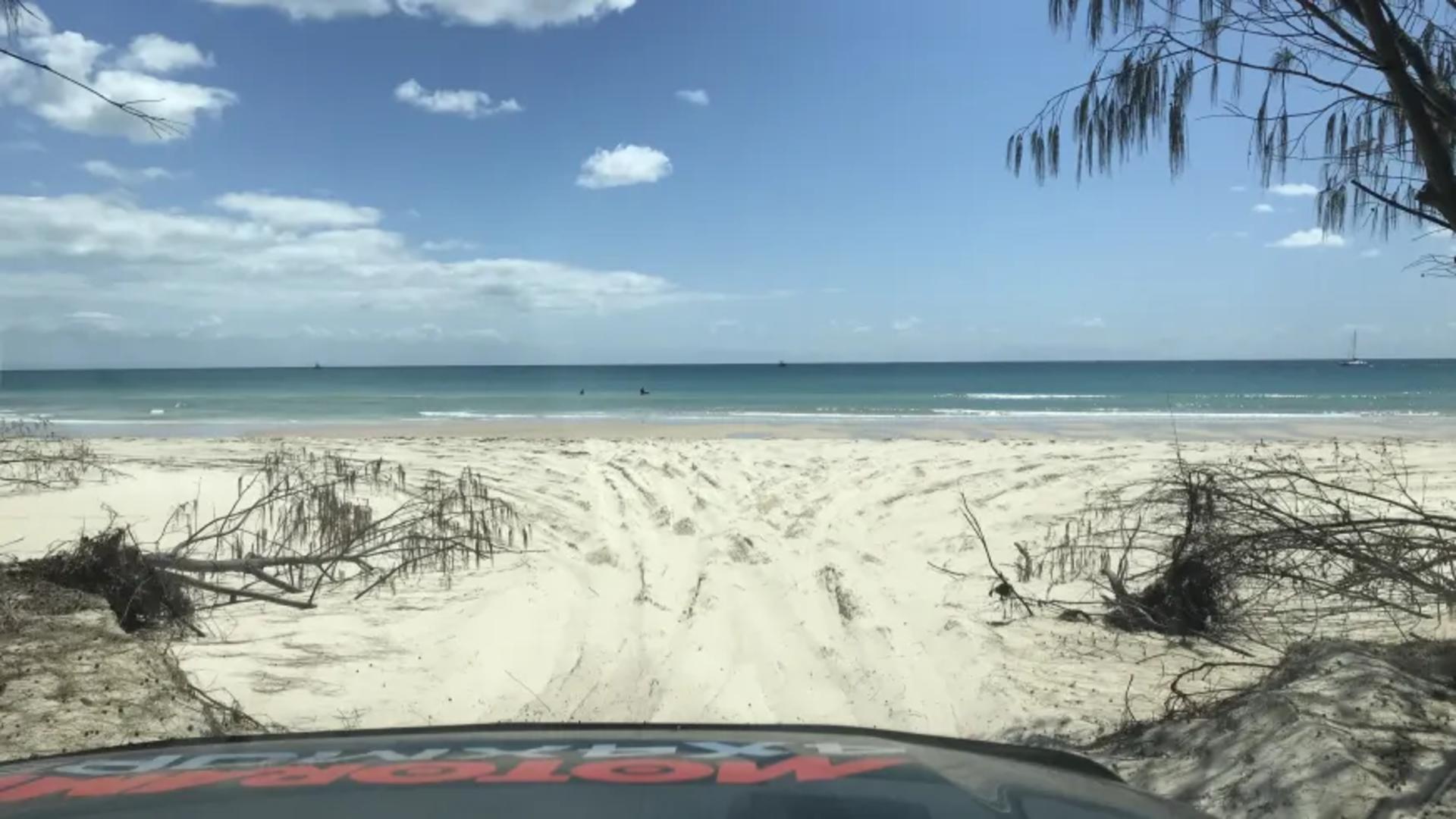
Spotting Wildlife on the Beach
Posted in 4x4xmore Adventures
Spotting Wildlife on the Beach
Driving on the beach can be challenging at times with washouts, soft sand and incoming tides. It's also the perfect place to see some of Australia's most amazing wildlife. As we've explored our beautiful coastline, we've put together a guide on what to spot while driving down the beach.
WHALES
The first and most obvious animal - perhaps because of it's size - is the whale. They frequent the oceans off the SE Qd Coast, usually from May to October, and in that period can easily be seen passing by from the beach. It's even better if you can get up high (like a lighthouse or lookout) and spot them even further out. Point Lookout on North Stradbroke Island, Indian Head on Fraser Island or Cape Moreton on Moreton Island - are all fantastic vantage points for whale watching. Look for a calm day, ideally with a westerly wind direction (which flattens the ocean), making them easier to see. But make sure you don't dismiss the opportunity to see them in close off the beach, as they will come within 100m of shore to rest, or play. So take it easy when you drive and you might spot one out of your window.
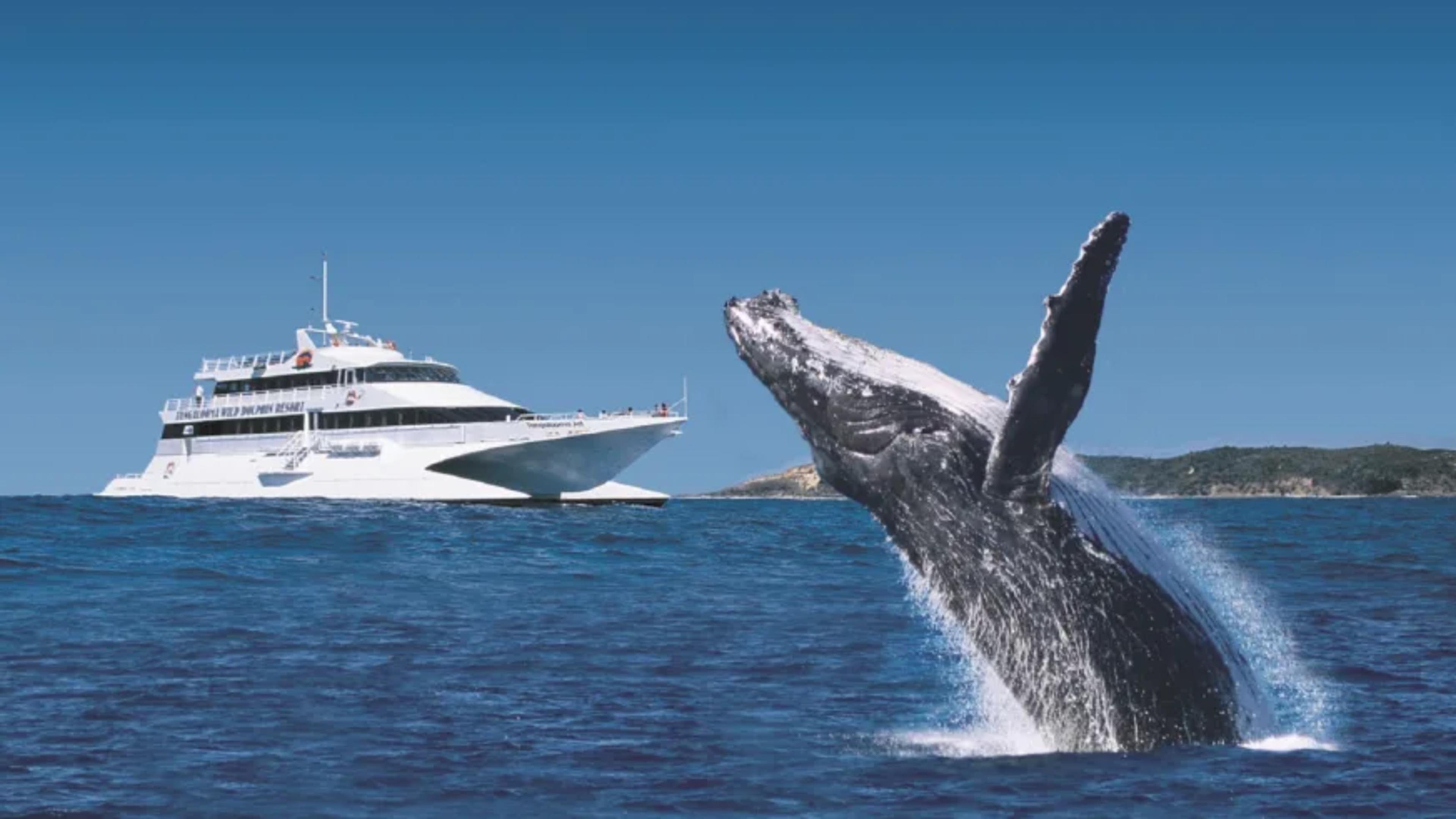
DINGOES & KANGAROOS
Two animals you'll see roaming the beach in specific places are dingoes & kangaroos. Dingoes really applies to Fraser Island though, as you won't see them on any other beaches. It's common to see them early morning or late afternoon, though they can appear at any time, especially at the tourist spots where they know there is food. Be mindful of them as they can become aggressive during mating season, don't leave your vehicle, be careful with your children when they are around, and especially don't feed them. It is illegal to feed them, and large fines apply.
There are currently 25 - 30 stable individual dingo packs on Fraser Island with 3 - 12 dingoes in each. Due to the size of the island, it makes Fraser one of the best places to spot them. Due to their isolation on Fraser Island, the dingoes are generally considered the purest strain of Dingoes in Australia. Keep an eye out when driving along the beach, or on one of the inland tracks!
Kangaroo's are a common sight on North Stradbroke Island. You will often see them grazing in the dunes on the grass, so you'll have to get out of your car to spot them, but they will also some down to the beach area. Though it's highly unlikely to hit one as they're aware of their surroundings, it's still advised you slow down when you see one, as they are very skitterish. You'll often see their tracks in the sand, so prepare when you do.
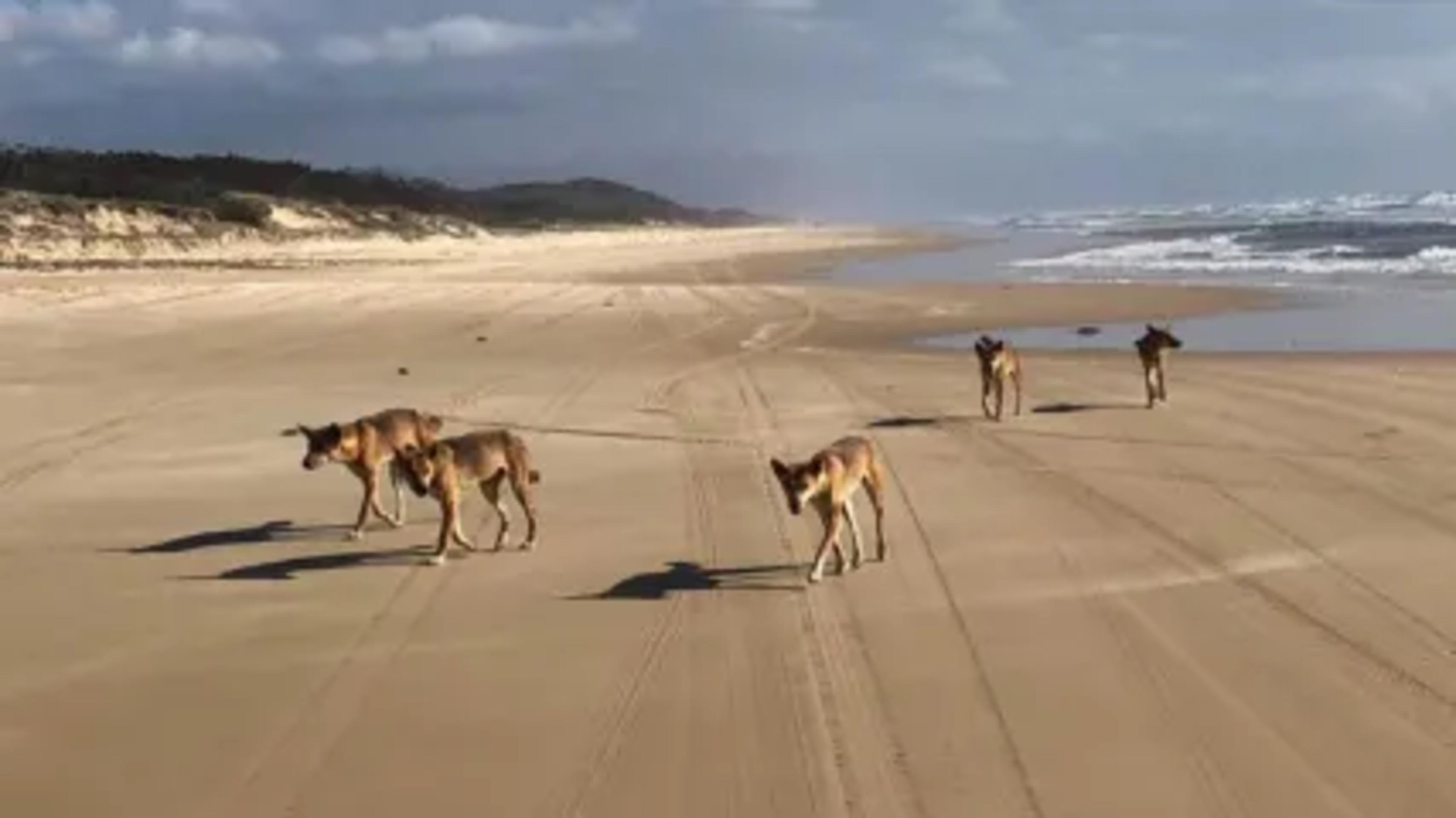
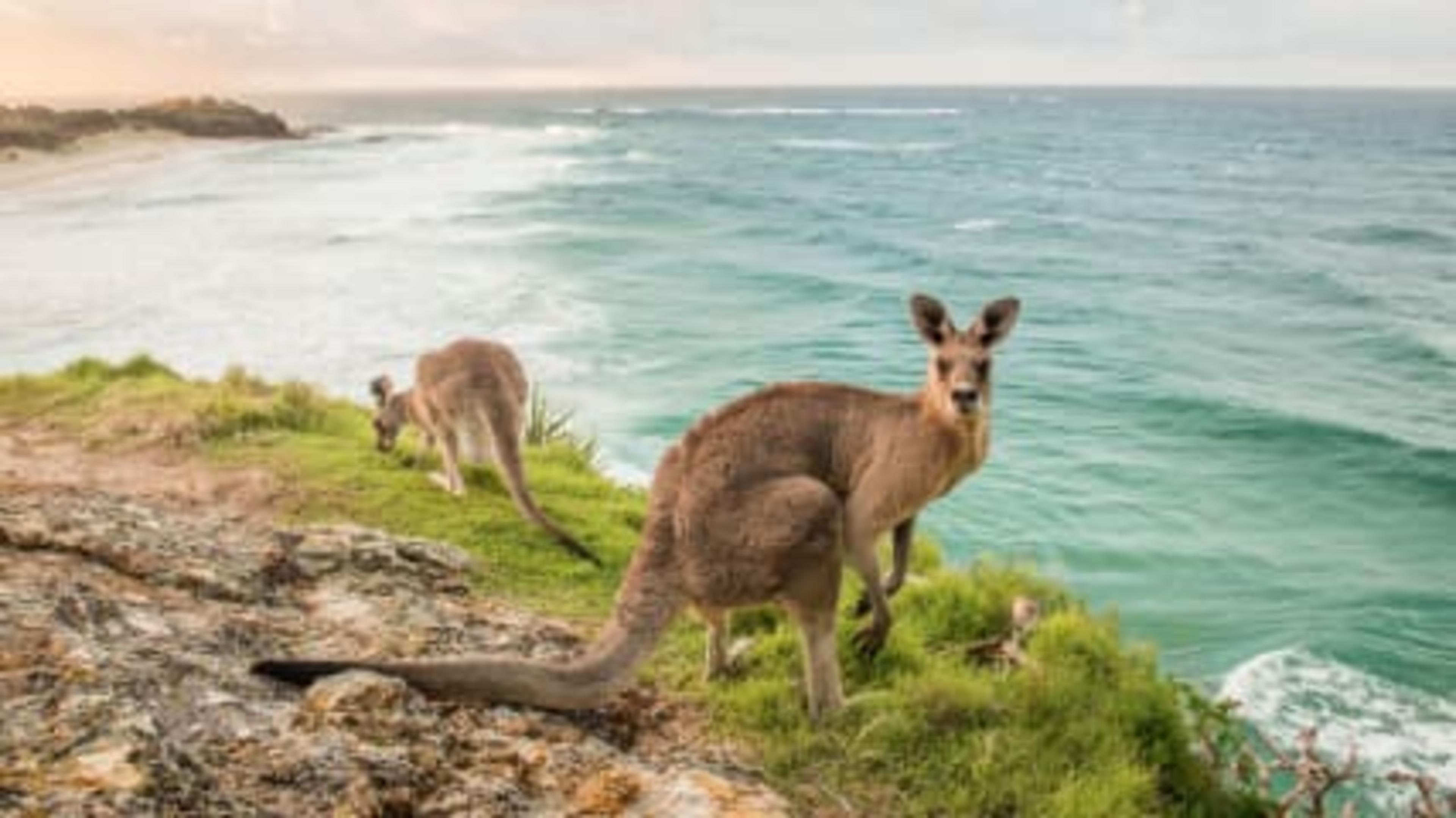
TURTLES
One animal to really be careful of on the beach are turtles. They use the beach to nest and are present on a wide variety of places along the coast, and on the islands like Stradbroke, Moreton and Fraser. As they are slow moving, you do need to keep an eye out for them as they arrive or depart the beach from their nesting. Often major hatching sites are closed off to the public during the season, but this is not guaranteed. Extra care should be taken when driving at night, because when the baby turtles hatch and make their way from the dunes towards the sea, they'll cross the beach and can be easily distracted by light.
Often leaving the beach, they will be tired and slower than usual. You're also likely to see a few dead turtles washed up from time to time, either from old age, boat strike or illness. You'll often smell the dead turtle before you see it, and it's not a pretty sight. Perhaps a good moment to distract the kids.
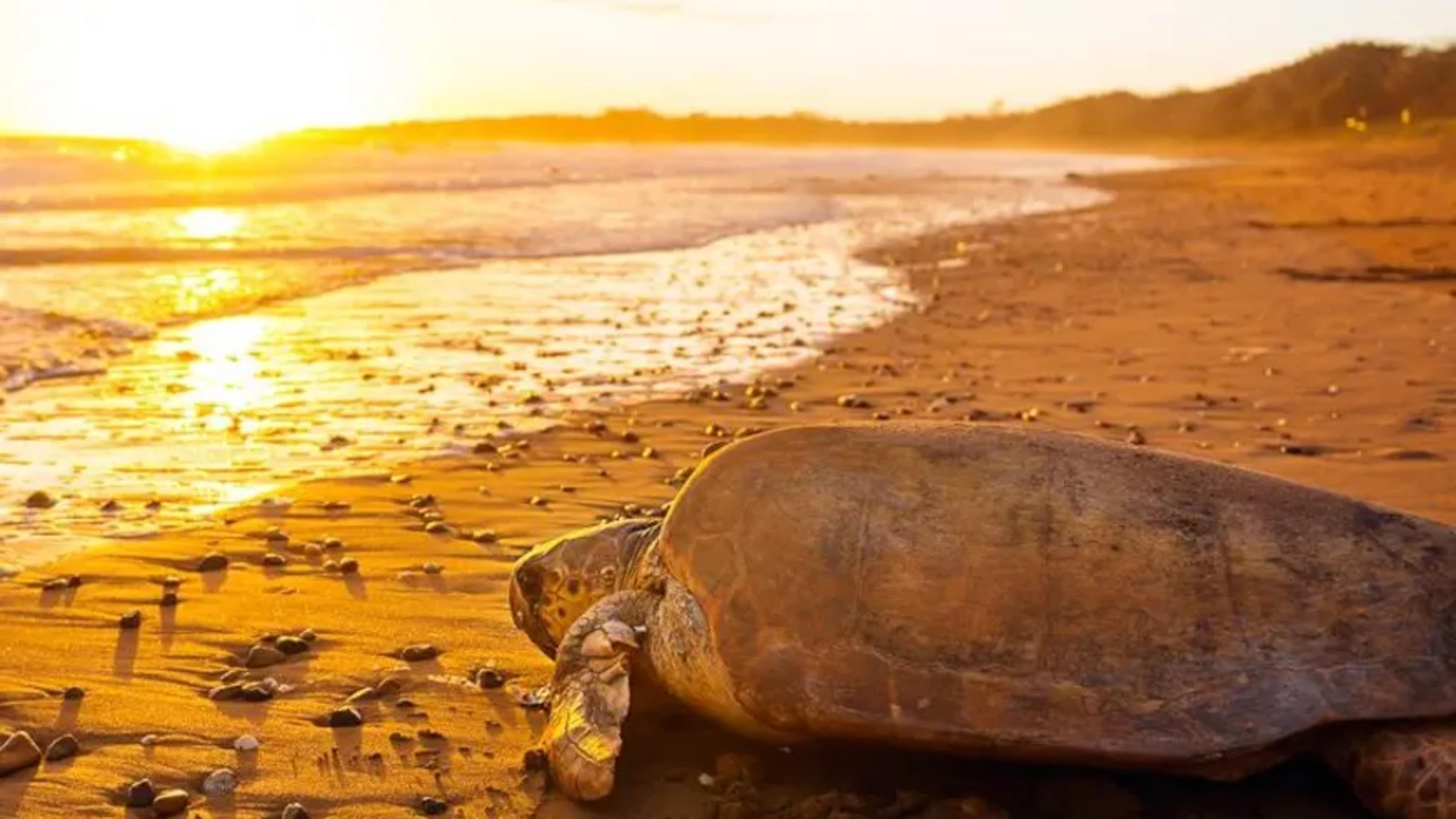
BIRDS | PIED OYSTERCATCHERS & TERNS
Pied Oystercatchers - locally knows as Pippi birds - can often be found darting around the shoreline, searching for food. You will spot them in pairs, because once they've found a mate, they stay with them for life. Usually they're probing the sand for signs of other Pippi's.
Oystercatchers are typically seen probing the sand or mud with their long bills in search of sandworms, molluscs or crabs, sometimes hammering at their shells. Or they may be seen roosting at high tide, sometimes with other species, such as gulls, cormorants, waterfowl or other waders. Pippi birds are often found within 10m of the water line, so be mindful of their presence when driving close to the waters edge.
Tern's are migratory birds and spend a long time flying, searching for food. Often times when you see them on the beach, they are settled in one area. Do your best to avoid them and slow down or drive around a pack of Terns, as constantly flying up and down (and away from oncoming 4x4's) is tiring on the birds, and doesn't allow them to properly rest & recuperate. Be mindful if you have your dog with you, and is off leash, as they may enjoy chasing the birds, but the birds certainly don't.
A tip we've noticed is that Terns will often sit / perch facing the prevailing wind direction. On sighting fish, it drops with partly closed wings and enters the water with little splash, often submerging completely, and emerges a moment later, shaking off the water as it flies.
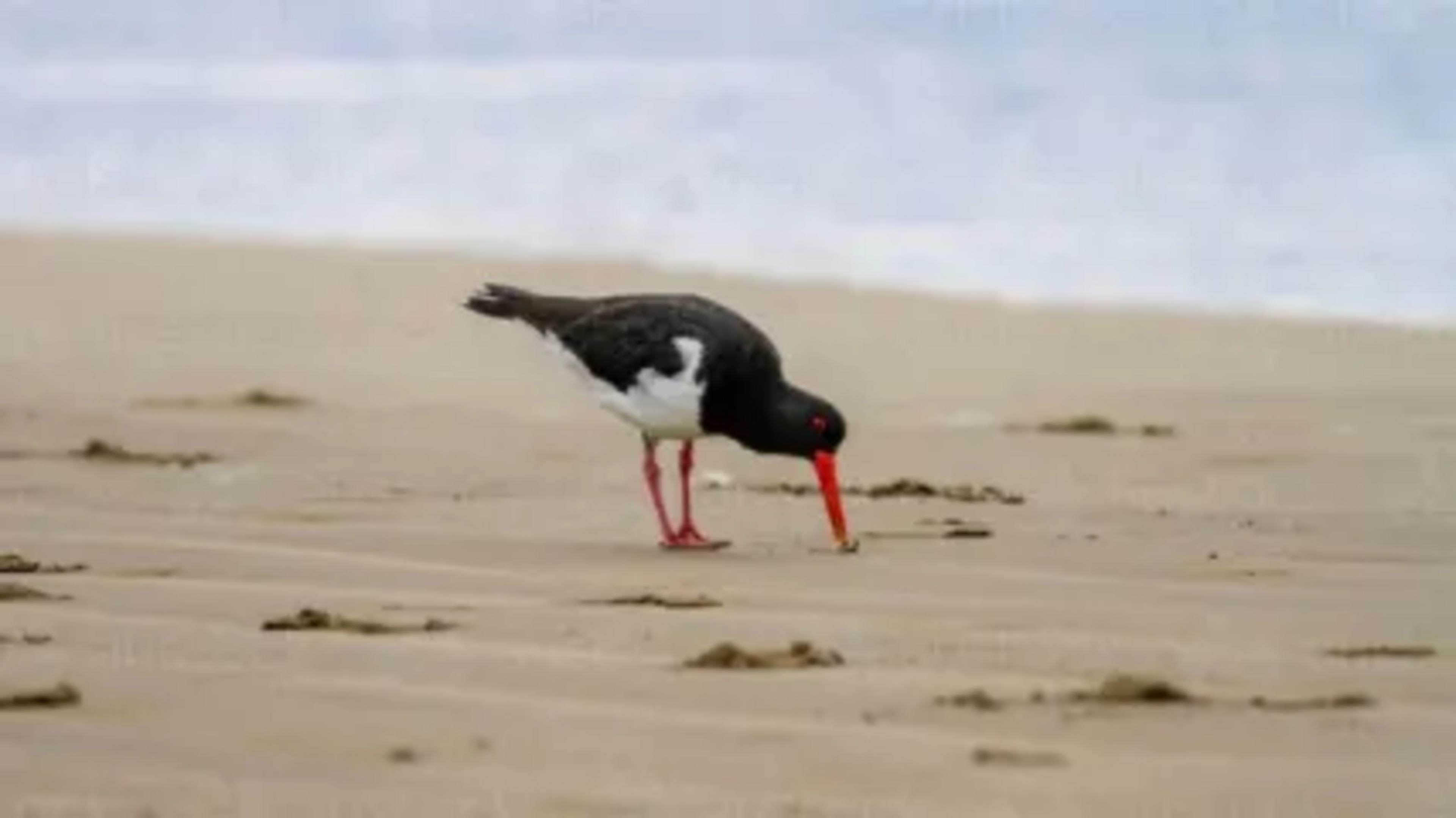

SPOTTING WILDLIFE
Most people are attracted to driving on the beach for a number of reasons.
It is important to ensure that you remain mindful of the local wildlife, and do your best to ensure you slow down, keep to (or below) the speed limit, so that the wildlife continues to be there for the next generation to see & enjoy.


